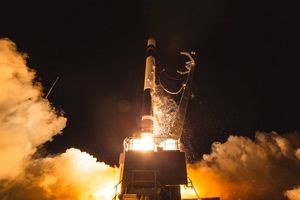The Impact of CO2 Laser Cutting on Fashion and Textiles
Have you ever considered how modern technology is reshaping the fashion and textile industries? CO2 laser cutting is at the forefront of this evolution, offering unmatched precision, efficiency, and innovative potential. In this article, we will explore the myriad applications of CO2 laser cutting in fashion and textiles, ranging from intricate designs to large-scale production. By the end, you’ll understand how this technology is setting new standards in the industry and how it can be applied to your own projects.
Laser cutting fabric has become a popular technique for creating precise, intricate designs. The process works best with materials that are stable, heat-resistant, and easy to cut. Common fabrics for laser cutting include cotton, polyester, felt, and synthetic blends. Cotton is a natural choice for its affordability and clean edges, while polyester offers durability and resistance to melting. Felt, with its dense structure, is ideal for detailed designs. When choosing the best fabrics for laser cutting, consider the material’s thickness, weave, and heat tolerance to ensure optimal results.
https://www.mimowork.com/laser-cutting-fabric/
Advantages of CO2 Laser Cutting for Fashion and Textiles
CO2 laser cutting employs a powerful laser beam to precisely cut, engrave, or etch materials. Here are some of the key benefits that make this technology ideal for fashion and textiles:
Precision: Achieve complex patterns and clean edges that are difficult to replicate with traditional techniques.
Speed: Rapidly cut through multiple fabric layers, greatly reducing production timelines.
Versatility: Works effectively on a variety of materials, including delicate silk and robust leather.
Automation: Integrates seamlessly with CAD software, allowing for scalable and repeatable manufacturing processes.
Eco-Friendliness: Reduces material waste and eliminates the need for additional edge-finishing processes.
Applications in Fashion and Textiles
Unique Clothing Design
CO2 laser cutting empowers designers to create elaborate patterns on garments. From intricate lace designs on wedding dresses to bold geometric cutouts in casual wear, the creative possibilities are vast.
Fabric Treatment
This technology can engrave or etch designs into fabric, adding texture and patterns without completely cutting through the material. This method is particularly effective on materials like denim and leather.
Accessories and Decorative Elements
Laser cutting is ideal for producing detailed accessories, such as bags, belts, and shoes, as well as decorative appliqués for garments.
Technical Textiles
In industries such as automotive and aerospace, CO2 lasers are utilized to cut technical fabrics with precision for applications like seat covers and airbags.
Home Decor Fabrics
From intricately designed curtains to accurately cut upholstery, CO2 laser cutting ensures consistency and precision in home textile applications.
Promoting Sustainable Practices
By minimizing waste and optimizing production efficiency, CO2 laser cutting supports sustainable fashion initiatives. Designers can create zero-waste patterns and repurpose leftover fabric into new designs.
Choosing the correct focal length for your CO2 laser is crucial for achieving precise cuts, especially when working with laser cutting fabric. The focal length determines the laser beam's spot size and depth of focus, directly impacting cutting quality. Shorter focal lengths (e.g., 1.5" to 2") are ideal for fine details on thin materials, while longer focal lengths (e.g., 4" to 5") suit thicker fabrics or materials requiring deeper penetration. To find the right balance, consider your material thickness and desired precision. Experimenting with different focal lengths can help optimize your results for laser cutting fabric.
https://www.mimowork.com/laser/co2-laser-lens-focal-length
Real-World Applications
High Fashion: Innovative designers like Iris van Herpen and Alexander McQueen have adopted laser cutting to create groundbreaking pieces that challenge conventional fashion norms.
Mass Production: Major brands such as Nike and Adidas use this technology for the precise and efficient crafting of athletic wear.
Artisan Designers: Smaller designers utilize laser cutting to produce one-of-a-kind, limited-edition items that attract consumer attention.
Now that you’re aware of the various applications of CO2 laser cutting in fashion and textiles, let’s explore some practical tips for incorporating this technology into your workflow.
Practical Tips for Implementing CO2 Laser Cutting
Choose the Appropriate Fabric
Different materials respond uniquely to laser cutting. Natural fibers like cotton and silk are generally suitable, while synthetic fabrics like polyester may require adjustments to avoid melting or discoloration.
Adjust Laser Settings
Power: Use lower power for delicate fabrics and higher power for thicker materials.
Speed: Modify the speed to find a balance between precision and efficiency.
Focus: Ensure the laser is properly focused for optimal cutting outcomes.
Utilize Vector Graphics for Designs
Create your designs in vector format (such as SVG or DXF) to guarantee accurate cutting paths, as most laser cutting software supports these file types.
Perform Test Cuts
Always try out settings on a scrap piece of fabric to identify the best parameters for your final piece.
Ensure Proper Ventilation
Laser cutting can generate fumes, particularly from synthetic materials. Use an exhaust system or work in a space with good airflow.
Maintain Equipment Regularly
Regular cleaning of the laser lens and mirrors is crucial for consistent performance and to extend the machine's lifespan.
Final Thoughts
CO2 laser cutting is revolutionizing the fashion and textile industries by providing exceptional precision, versatility, and efficiency. From custom designs to sustainable manufacturing practices, this technology is setting the stage for future advancements in design and production. By understanding its applications and adhering to best practices, you can unlock its full potential for your creative projects.
Are you ready to explore the future of fashion and textiles? Start your journey with CO2 laser cutting today and see how it can elevate your creative process!
Media Contact
Company Name: Mimowork
Email: Send Email
Country: China
Website: https://www.mimowork.com/
More News
View More



Recent Quotes
View More
Quotes delayed at least 20 minutes.
By accessing this page, you agree to the Privacy Policy and Terms Of Service.